STATEHOUSE REPORT | ISSUE 22.25 | June 23, 2023
BIG STORY: IAAM to be dedicated Saturday, open on Tuesday
LOWCOUNTRY, Ariail: Jail time
COMMENTARY, Brack: Attention, governor: Racism still exists
SPOTLIGHT: The Felkel Group
MY TURN, Frazier: IAAM opening brings bittersweet memories
MYSTERY PHOTO: Funky scene
FEEDBACK: Send us your thoughts
IAAM to be dedicated Saturday, open on Tuesday
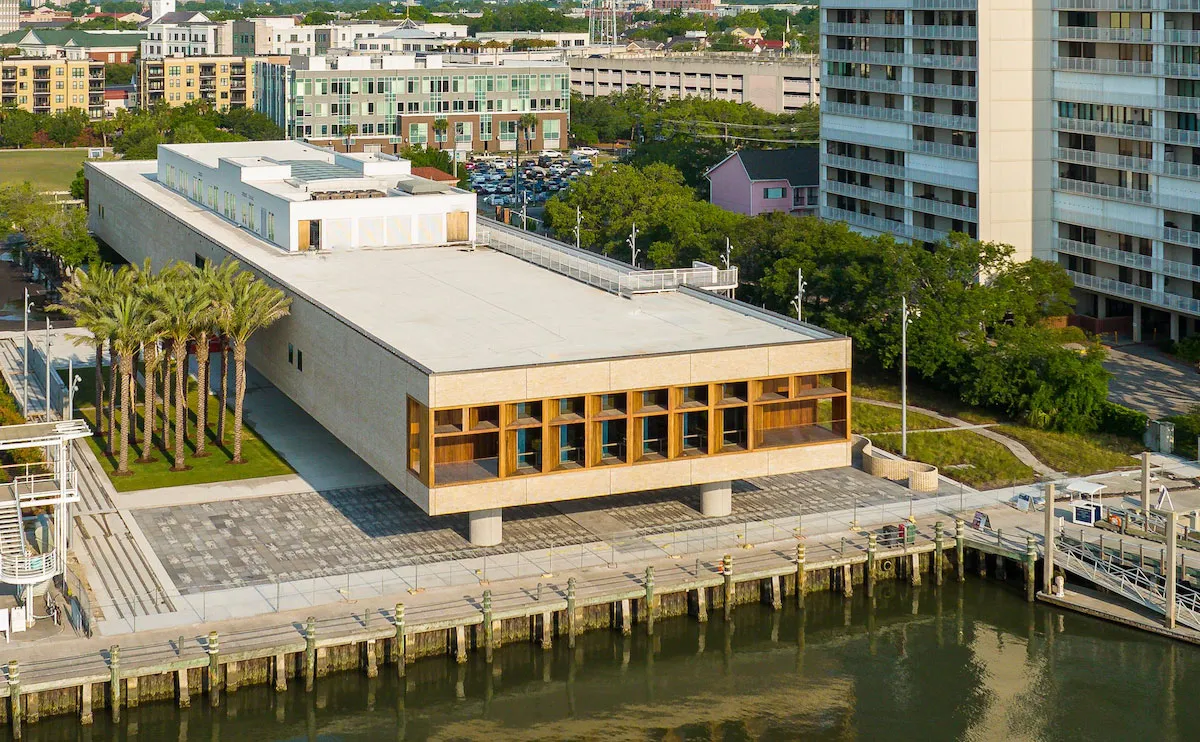
Staff reports | The International African American Museum, a dream for more than two decades, will be dedicated Saturday in a ceremony that will be filled with distinguished guests and visitors.
“The museum will pull together White, tan, brown, Black and other Americans to give richer looks at the history and culture that shaped our country,” editor and publisher Andy Brack wrote Friday. “Even more exciting is the new IAAM Center for Family History which will serve as a genealogical hub to connect descendants of enslaved Africans to their lost family pasts. The museum will help to fill voids ignored by history books and allow many Americans to reclaim their family stories and heritage.
The new museum offers nine core galleries, a special exhibit space and a genealogy center to present a sweeping story of the forced migration of Africans to America. The galleries reveal the realities of the slave trade and plantation life while presenting the skills and culture of people of African descent and their contributions to this country.
A commemorative magazine
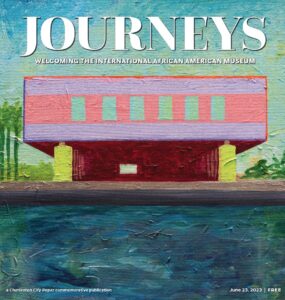 Check out the full coverage in the Charleston City Paper in a special commemorative 48-page magazine that welcomes the museum to the Holy City. Among its featured articles are:
Check out the full coverage in the Charleston City Paper in a special commemorative 48-page magazine that welcomes the museum to the Holy City. Among its featured articles are:
- FOOD: Chefs, scholars talk about the influence of West African culture, which details the influences of West African cuisine in Lowcountry cooking;
- MUSIC: Charleston jazz played big role nationally, which chronicles the influence of Charleston’s jazz through the years;
- ARTS: Remembering when Porgy came home, a look back at the history of America’s most famous opera, Porgy and Bess, which was set in Charleston.
- HISTORY: A timeline of African American influence in South Carolina
- VISION: A museum idea that took two decades to become a reality
- INSIDE: IAAM offers place for learning like no other
- PEOPLE: Nine area Black leaders to know
There are also other pieces on Reconstruction, why the museum is a big deal and what it was like to grow up across the street from where the museum now is (also published below).
A day of celebration
The highly anticipated Saturday dedication of the new museum will include a community celebration in Marion Square just blocks away from where luminaries will cut ribbons, give speeches and more.
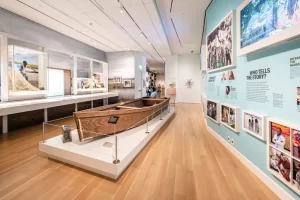
“We’re thrilled to welcome community members, visitors and dignitaries from far and wide to the grand opening of the International African American Museum,” Dr. Tonya Matthews, president and CEO of IAAM, said in a statement. “We have waited a long time for this moment — we have many to thank and much to celebrate.”
A Community Watch Celebration will take place from 10 a.m. to 2 p.m. June 24 at Marion Square in Charleston. Charlamagne Tha God, a Moncks Corner native and host of the national radio show The Breakfast Club, will emcee the event.
The Boeing-sponsored event is free and will include a live simulcast of the opening ceremony, food trucks and performances by local musicians and artists such as Grammy Award-winning band Ranky Tanky, former Charleston poet laureate Marcus Amaker and Charleston-based DJ SCrib. Other performers will include Bebe Winans, Candice Glover, Jesse Nager and more.
The event will also include activities led by the Boeing South Carolina DreamLearners, an educational program that provides students with opportunities to learn about careers in STEM, advanced manufacturing and aerospace.
“It’s exciting to invite the community to join us for this historic moment. We’re preparing to open our doors with music, food, poetry, incredible visuals and words of wisdom — and to truly celebrate African American culture and its connection to and influence on the world,” Matthews said.
The museum will open June 27 every Tuesday through Sunday from 10 a.m. to 5 p.m. excluding Christmas and Thanksgiving. As of today, tickets for opening day are sold out.
- Owen Kowalewski of the Charleston City Paper contributed to this story. Have a comment? Send to: feedback@charlestoncitypaper.com
Jail time

Cartoonist Robert Ariail always has interesting takes on issues, such as this week’s cartoon relating socialist Eugene Debs, who ran for president from prison in the 1920s, to former President Donald Trump. Love the cartoon? Hate it? What do you think: feedback@statehousereport.com.
Attention, governor: Racism still exists

By Andy Brack, editor and publisher | Bless her heart. Former S.C. Gov. Nikki Haley is doubling down on the presidential campaign trail that America isn’t racist.
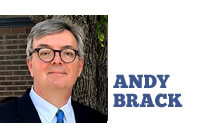 “How far have we come? So far that Barack Obama was elected president,” Haley writes in a pandering, smug June 21 op-ed in the Daily Mail that complained Obama attacked her.
“How far have we come? So far that Barack Obama was elected president,” Haley writes in a pandering, smug June 21 op-ed in the Daily Mail that complained Obama attacked her.
If Obama’s election twice as president is proof that racism no longer exists, then Haley must still be reading those South Carolina history books that taught White plantation masters were benevolent and slaves were happy.
So if America isn’t racist, governor, what happened? History clearly shows America built generational wealth on the backs of millions of enslaved Africans, 40% of whom entered this continent through Charleston. Did something magically occur sometime between Jim Crow, the civil rights movement (a national effort to allow Blacks to have equal rights 100 years after the Civil War) and when you became the first minority to serve as South Carolina’s governor that made decade after decade of violence, lynchings, fear, racism and violence go “poof” in the wind?
This racism that apparently no longer exists is sure to have had nothing to do with people you must have forgotten, such as Walter Scott, shot in the back in 2015 and killed by a North Charleston policeman. Or George Floyd, who struggled to breathe and died in 2000 because a White police officer in Minneapolis had his knee on his neck. Or Dylann Roof, the young White supremacist from South Carolina who was groomed to hate and ended up slaughtering nine worshippers in Charleston in 2015 at Emanuel AME Church.
Remember any of that, governor? Still want to say racism doesn’t exist? What about the years of cynical Republican political strategies that preyed on race, fear and hate to divide the political parties, from Richard Nixon’s Southern Strategy that targeted white conservative voters to S.C. consultant Lee Atwater’s coded language that helped Ronald Reagan appeal to racist sentiments in the then Democratic South. Or the out-in-the-open blatant racist language of Donald Trump, the guy who you served as America’s ambassador to the United Nations? Any of this ring a bell?
The ever-ambitious Haley often points to the removal of the Confederate flag in 2015 while she was governor. If racism didn’t exist, why was that flag on top of the Statehouse and then on the Statehouse grounds for years? Or was removing the flag from a public place the signal to all of the racists out there that it was time to furl their prejudice and for America to become a happy place filled with light and joy?
Haley is right that the America of 2023 is different from the America of 1776 or a few years later when the founding fathers said slaves were worth three-fifths of a White person. The country has made enormous progress. There’s enormous promise.
But to say that America isn’t racist is the modern political equivalent of hippies wearing the rose-colored glasses of unreality. It’s clear what Haley is doing in op-eds and what she is saying on the stump at rallies across the country is trying to seem reasonable as the GOP presidential political environment spins out of control. She’s trying to be viewed as relevant and moderate in a field of crazies who are scared to go after the twice-indicted Trump. She’s focusing on the country’s promise and trying to build inroads.
But conflating history and what’s really happening across America for political purposes is a disservice to the people she wants to serve. And yes, we need a leader who can say that America isn’t a racist country – but that can’t happen until Haley and fellow Republicans truly engage to reduce economic disparities, improve education and include everyone in the conversation, not just people on their side of the aisle. Only when we fix the ills that keep Americans apart and behind can we move toward freedom’s dreams and away from a country that still suffers from racism.
Award-winning columnist Andy Brack is editor and publisher of Statehouse Report and the Charleston City Paper. Have a comment? Send to: feedback@statehousereport.com.
The Felkel Group
 The public spiritedness of our underwriters allows us to bring Statehouse Report to you at no cost. This week in the underwriter spotlight is The Felkel Group, a battle-tested public affairs and business development firm that assists corporations, associations and not-for-profits that are serious about their long-term success. The Felkel Group solves problems, crafts and delivers messages, helps organizations to manage crisis, and uses a wealth and breadth of valuable relationships to help to seal deals.
The public spiritedness of our underwriters allows us to bring Statehouse Report to you at no cost. This week in the underwriter spotlight is The Felkel Group, a battle-tested public affairs and business development firm that assists corporations, associations and not-for-profits that are serious about their long-term success. The Felkel Group solves problems, crafts and delivers messages, helps organizations to manage crisis, and uses a wealth and breadth of valuable relationships to help to seal deals.
The Felkel Group is also home to an outstanding advocacy tool called The Rap Index, a powerful intelligence tool that employs sophisticated computer modeling and profiling techniques to help organizations find their most effective advocates. To learn more about The Felkel Group and its Rap Index, go to: http://www.felkelgroup.com.
Frazier: IAAM opening brings bittersweet memories
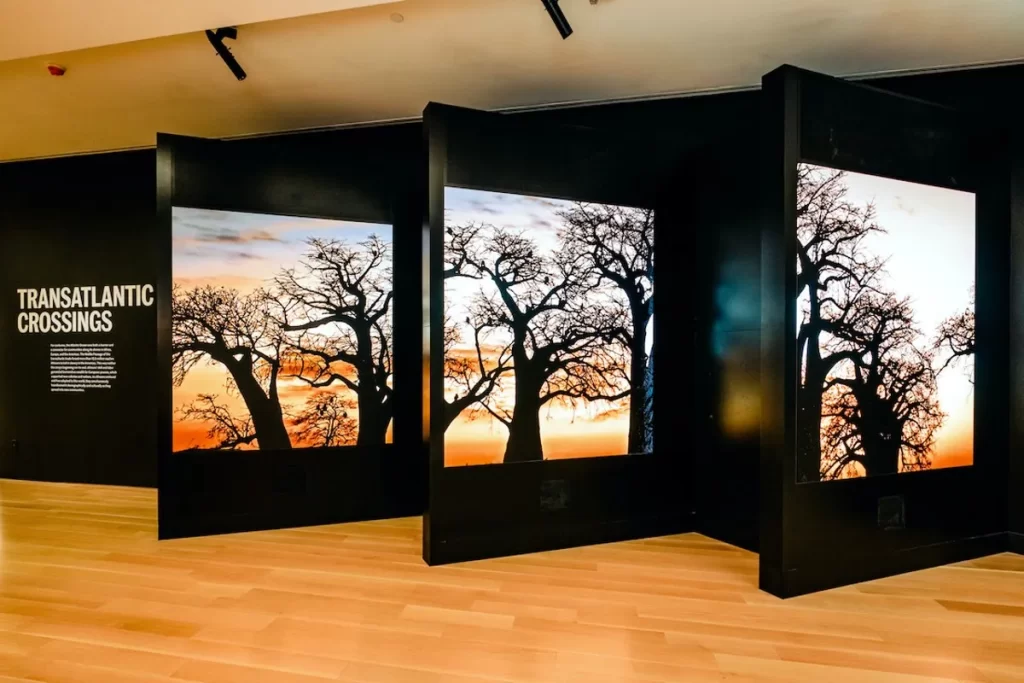
By Herb Frazier | A 1960s March wind lifted our kites high above the rusty chain link fence that divided our neighborhood and an industrial area along the Cooper River. If the twine snapped, our kites fell where hundreds of enslaved lives were lost in the freezing winter of 1807 and 1808.
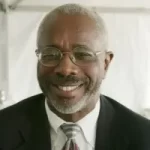
We didn’t know the fencing along Concord Street divided our neighborhood, the Ansonborough Homes housing project, from Gadsden’s Wharf where enslaved Africans, possibly our ancestors, had been brought into Charleston.
About 10 million to 12 million captured Africans who survived the trans-Atlantic slave trade arrived into the Western Hemisphere. Of the Africans imported into the British mainland of North America, more than 40% came through Charleston. Historians say that thousands of enslaved people passed through Gadsden’s Wharf, the last major slave-trading port in the United States. It is a gripping fact hidden from us for far too long.
The site is now home to the International African American Museum (IAAM), which opens this weekend. Unbeknownst to me when I left the projects in the mid-1960s, life placed me on a wandering path that would put me in the future IAAM next to my old neighborhood.
The only museum we knew at that time was the old Charleston Museum on Rutledge Avenue. Its only hint of Africa was a spooky mummy exhibit. In Charleston, echoes of Africa were hiding in plain sight, but we didn’t know them then. They existed in the coiled sweetgrass baskets, the foods and the language.
The civil rights movement was in full swing by the spring of 1972 when I got my first job as a newspaper reporter at The News & Courier. My father couldn’t understand why his son wanted to work at “that paper,” the one he wanted to burn down in the 1950s because of its editorial stance on segregation. Through the years, journalism provided me with an education on Africa that I didn’t get in the projects or South Carolina classrooms.
I’ve walked in Sierra Leone, The Gambia and Ghana where shackled people shuffled along before they were placed on ships bound to the so-called new world. I’ve seen where enslaved Africans worked in the sugar cane fields of Barbados which spawned a colony that became South Carolina. I know the origin of words and crafts unique to Gullah Geechee culture.

These unimaginable experiences for a Black child of the 1960s in a segregated South somehow found me! Did the ancestors give them to me knowing that one day they’d need someone to speak their truths as part of a museum that tells their stories?
The invitation came in the fall of 2021 to stand in front of the camera for one of about 25 informal conversations now displayed in the museum. The museum calls them “American Journeys Flashpoints.” The museum did them with people from different walks of life. The topics include Emancipation to Reconstruction, citizenship, gender, injustice, and land and community. I was to be in one of the videos, but to my surprise, I was told recently that I am in two of them. The ancestors have been busy.
The IAAM will be an eye-opening experience for many as it was for me. I am still moved by the black walls of the Port of Departure mini-gallery that bear the names and ages of young Africans like Houa, 7 and Lome, 14, who arrived here in chains. I was their age when I ran barefoot through Ansonborough.
I am saddened, however, that across the street from the museum the Ansonborough story is hiding in plain sight, like Gadsden’s Wharf was invisible to me when I was a child.
As thousands stream to the IAAM, they’ll pass a wide grassy field where Ansonborough once stood, but they won’t know its story. It was the nurturing village that raised scores of children like me. Ansonborough is gone, another victim of gentrification.
- Frazier, senior projects editor of the Charleston City Paper, is a veteran South Carolina journalist. Have a comment? Send to: feedback@charlestoncitypaper.com
Funky scene
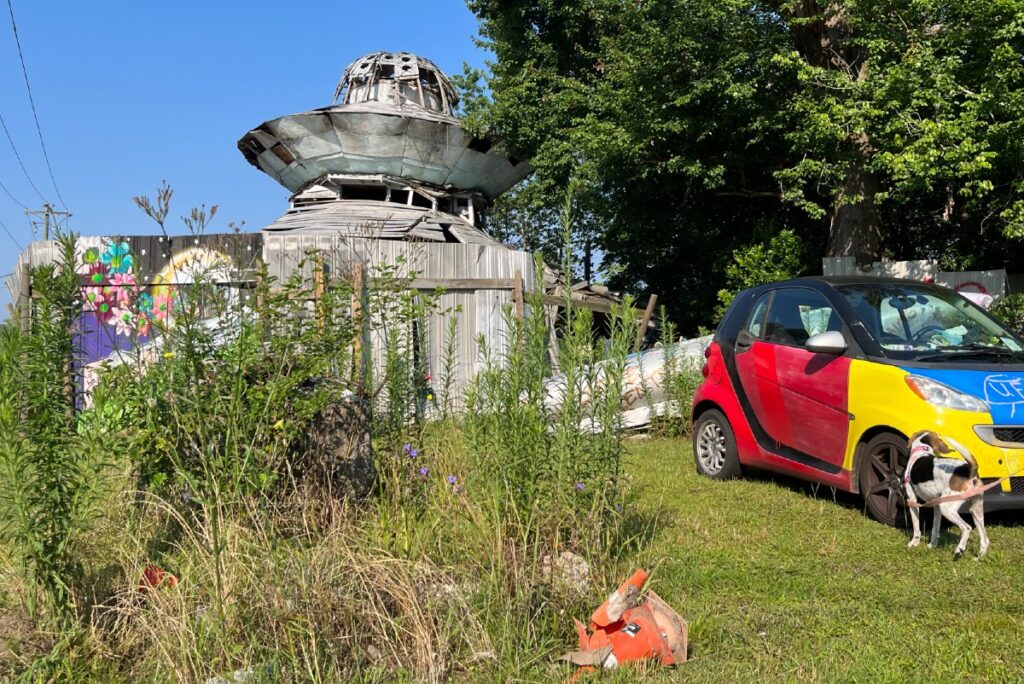
Here’s a funky scene with which you might be familiar if you travel South Carolina’s backroads. What is it and where is it? Send us your guess – as well as your name and hometown – to feedback@statehousereport.com.
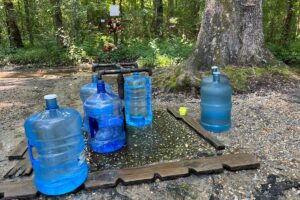 More than two dozen people, including several newbies, correctly identified last week’s mystery, “Water bottles,” as being the location of God’s Acre Healing Spring just outside of Blackville.
More than two dozen people, including several newbies, correctly identified last week’s mystery, “Water bottles,” as being the location of God’s Acre Healing Spring just outside of Blackville.
Elizabeth Jones of Columbia noted that the legal “owner” of the land is a little different: “What’s special about the photo is the person to whom it was deeded — God! The owner of the land where the curiously beneficial spring sprouts deeded an acre of land around it to God because he believed no person should claim and control the mineral spring. People travel from all over to fill their containers with the water that’s purported to have healing properties.”
Others who identified the spring were: Frank Bouknight of Summerville; Steve Willis of Lancaster; Peggy Reuis, Daniel Ruple and Melissa Hansen, all of Blackville; Diane Humphries of Lexington; Charles Ford of Georgetown; Penny Forrester of Tallahassee, Fla.; Truett Jones of Summerton; Will Bradley of Las Vegas, Nevada; Allan Peel of San Antonio, Texas; Pat Keadle of Wagener; Jay Altman and Rosemarie Lankford, both of Columbia; Lisa Daff of Cordova; Barry Wingard of Florence; George Graf of Palmyra, Virginia; Megan Browne of James Island; and Bill Segars of Hartsville. Five people identified the sprints, but didn’t offer their hometowns: Jonetria Brown, Tony Brown, Chelsea Reeves, Pat Rosenthal and Ann Patterson.
>> Send us a mystery picture. If you have a photo that you believe will stump readers, send it along (but make sure to tell us what it is because it may stump us too!) Send to: feedback@statehousereport.com and mark it as a photo submission. Thanks.
Send us your thoughts
We encourage you to send in your thoughts about policy and politics impacting South Carolina. We’ve gotten some letters in the last few weeks – some positive, others nasty. We print non-defamatory comments, but unless you provide your contact information – name and hometown, plus a phone number used only by us for verification – we can’t publish your thoughts.
- Have a comment? Send your letters or comments to: feedback@statehousereport.com. Make sure to provide your contact details (name, hometown and phone number for verification. Letters are limited to 150 words.
- ORDER NOW: Copies are in Lowcountry-area bookstores now, but if you can’t swing by, you can order a copy online today.
- Now available as an e-book!
ABOUT STATEHOUSE REPORT
Statehouse Report, founded in 2001 as a weekly legislative forecast that informs readers about what is going to happen in South Carolina politics and policy, is provided to you at no charge every Friday.
- Editor and publisher: Andy Brack, 843.670.3996
Donate today
We’re proud to offer Statehouse Report for free. For more than a dozen years, we’ve been the go-to place for insightful independent policy and political news and views in the Palmetto State. And we love it as much as you do.
But now, we can use your help. If you’ve been thinking of contributing to Statehouse Report over the years, now would be a great time to contribute as we deal with the crisis. In advance, thank you.
Buy the book
Now you can get a copy of editor and publisher Andy Brack’s We Can Do Better, South Carolina! ($14.99) as a paperback or as a Kindle book ($7.99). . The book of essays offers incisive commentaries by editor and publisher Andy Brack on the American South, the common good, vexing problems for the Palmetto State and interesting South Carolina leaders.
More
- Mailing address: Send inquiries by mail to: P.O. Box 21942, Charleston, SC 29413
- Subscriptions are free: Click to subscribe.
- We hope you’ll keep receiving the great news and information from Statehouse Report, but if you need to unsubscribe, go to the bottom of the weekly email issue and follow the instructions.
- Read our sister publication: Charleston City Paper (every Friday in print; Every day online)
- © 2023, Statehouse Report, a publication of City Paper Publishing, LLC. All rights reserved.
















 We Can Do Better, South Carolina!
We Can Do Better, South Carolina!